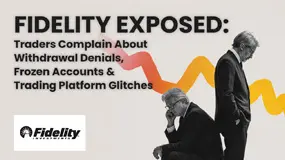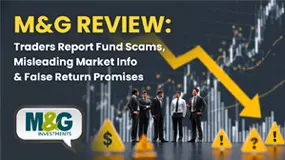简体中文
繁體中文
English
Pусский
日本語
ภาษาไทย
Tiếng Việt
Bahasa Indonesia
Español
हिन्दी
Filippiiniläinen
Français
Deutsch
Português
Türkçe
한국어
العربية
What Is Forex Trading Margin? How to Calculate It?
Abstract:Forex trading beginners could often come across the term ”margin” when involving in forex trading.

Maybe it is a completely new concept to you. Either way, it is a very important topic that you will need to master in order to become a successful Forex trader.
Margin and leverage are among the most important concepts to understand when trading forex. In this article, we will go into more detail about exactly what the margin is, how margin trading within forex works, and some things you should look out for.
What Is Margin in Forex Trading
Margin in trading is the deposit required to open and maintain a position. When trading on margin, you will get full market exposure by putting up just a fraction of a trades full value. So margin is not a cost or a fee, but it is a portion of the customer's account balance that is set aside in order trade. Investors use margin trading in forex to increase possible return on investment.
A margin account, at its core, involves borrowing to increase the size of a position and is usually an attempt to improve returns from investing or trading. Using a ‘margin account’, an investor will use their own funds to put forward a percentage of a larger value investment, with the broker putting forward the rest.
Margin and leverage
Margin and leverage are two sides of the same coin. Margin is the minimum amount of money required to place a leveraged trade, while leverage provides traders with greater exposure to markets without having to fund the full amount of the trade.
The margin required by your FX broker will determine the maximum leverage you can use in your trading account. Therefore, trading with leverage is also sometimes referred to as “trading on margin”. For example, A minimum margin requirement of 0.5% is the same as 200:1 leverage. A leverage ratio of 100:1 would be 1%.
Example of buying on margin
Let's say a broker offers leverage of 1:50 for Forex trading. This means that for every 50 units of currency in an open position, 1 unit of the currency is required as the margin. In other words, if the size of your desired Forex position was $50, the margin would be $1.
Further, let‘s say EUR/USD is trading at $1.1128, with a buy price of 1.11284 and a sell price of 1.11276. You think that the euro is set to gain value against the dollar, so you decide to buy a single lot to the value of €100,000. With the trading margin, you don’t have to put down the full amount of the trade. In this case, you only have to commit €2000 as margin.
What Is A Margin Call
A margin call is what happens when a trader no longer has any usable/free margin. In other words, the account needs more funding. This tends to happen when trading losses reduce the usable margin below an acceptable level determined by the broker. The point where your broker initiates a margin call is called the margin call level.
You have to know the two kinds of margin firstly:
Initial margin
The initial margin is the minimum amount youll need to put up to open a position. It is sometimes called the deposit margin, or just the deposit.
Maintenance margin
The maintenance margin, also known as variation margin, is additional funds that may be required from you if your position moves against you. Its purpose is to ensure you have enough money in your account to fund the present value of the position at all times – covering any running losses.
The maintenance margin is the required percentage of the total investment that is less than the initial margin, and which the investor must maintain in their trading account in order to avoid a margin call.
Once the investors account has fallen below the required maintenance margin level, the broker will send a margin call to the investor to notify him that he must put more cash into the account to make up for the difference between the current price and the maintenance margin requirement.
Pros And Cons of Margin in Forex Trading
Margin trading can open great possibilities for you as a forex trader to engage in markets to a much higher level than you could with just your own funds. Buying on margin means that you have the potential to spread your capital even further, as you can diversify your positions over a wider array of markets. Beyond this, margin trading means you can always be in a position to make a move in the forex market if you spot an opportunity.
It is well worth remembering though, that as the largest trading market in the world by volume, the forex market can move incredibly fast. Therefore, although margin can magnify profits, it can also amplify losses if the market moves against you. This is because your loss is calculated from the full value of the position, not your deposit, and it is possible to lose more than your initial deposit on a trade. The very best advice you can heed is to take the opportunity that a margin presents, but remain mindful and have a strong risk management strategy in place.

Disclaimer:
The views in this article only represent the author's personal views, and do not constitute investment advice on this platform. This platform does not guarantee the accuracy, completeness and timeliness of the information in the article, and will not be liable for any loss caused by the use of or reliance on the information in the article.
Read more

WikiEXPO Global Expert Interviews: Gustavo Antonio Montero: ESG in Finance
As WikiEXPO Dubai concludes successfully, we had the pleasure of interviewing MR. Gustavo, the Chairman and Founder of Carter Capital Management. (Sustainable Digital Assets Management) and Palmer Advisory and Consulting. Palmer is a global business that develops advanced fintech/digital technology solutions and works with Blockchain technologies.

Fidelity Exposed: Traders Complain About Withdrawal Denials, Frozen Accounts & Platform Glitches
Does Fidelity Investments prevent you from accessing funds despite numerous assurances on your requests? Do you witness an account freeze by the US-based forex broker every time you request withdrawal access? Do you struggle with an unstable trading platform here? Is the slow Fidelity customer service making you face forced liquidation? These issues haunt traders, with many of them voicing their frustration on several broker review platforms such as WikiFX. In this Fidelity review article, we have shared quite a few complaints for you to look at. Read on!

Exposing The Trading Pit: Traders Blame the Broker for Unfair Withdrawal Denials & Account Blocks
Did you receive contradictory emails from The Trading Pit, with one approving payout and another rejecting it, citing trading rule violations? Did you purchase multiple trading accounts but receive a payout on only one of them? Did The Trading Pit prop firm refund you for the remaining accounts without clear reasoning? Did you face account bans despite using limited margins and keeping investment risks to a minimum? These are some raging complaints found under The Trading Pit review. We will share some of these complaints in this article. Take a look.

M&G Review: Traders Report Fund Scams, Misleading Market Info & False Return Promises
Applying for multiple withdrawals at M&G Investments but not getting it into your bank account? Do you see the uncredited withdrawal funds out of your forex trading account on the M&G login? Does the customer support service fail to address this trading issue? Does the misleading market information provided on this forex broker’s trading platform make you lose all your invested capital? Were you lured into investing under the promise of guaranteed forex returns? These issues have become highly common for traders at M&G Investments. In this M&G review article, we have echoed investor sentiments through their complaint screenshots. Take a look!
WikiFX Broker
Latest News
Consob Targets Political Deepfake “Clone Sites” and Unlicensed Platforms in Latest Enforcement Round
WikiEXPO Global Expert Interviews: Gustavo Antonio Montero: ESG in Finance
2 Malaysians Arrested in $1 Million Gold Scam Impersonating Singapore Officials
Is FXPesa Regulated? Real User Reviews & Regulation Check
Fraud Mastermind Zhimin Qian Sentenced to 11 Years for $6.6 Billion Bitcoin Ponzi Scheme
Almahfaza Broker – 2025 Review: Safe or Scam?
Uniglobe Markets Review 2025: A Complete Guide to an Unregulated Broker
INZO Broker No Deposit Bonus: A 2025 Deep Dive into Its Offers and Risks
Exness Broker Expands in South Africa with Cape Town Hub
Global Guide to Finding Forex IBs/Brokers — Share Your Pick and Win Big!
Currency Calculator



